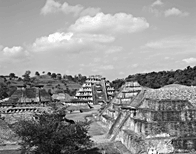Chapter 6. Using XPath Queries
| Throughout this book,whenever we mention or implement XPath expressions, we use what is called the abbreviated form. In this chapter, we will learn the parts that Microsoft supports of an enhanced syntax, called the verbose form of XPath. Yes, that's right. Microsoft has implemented only a subset of the query language. Also, there are some differences between Microsoft's implementation and the original W3C specification. We'll cover these topics first thing. We'll be discussing things like selection predicates, node tests, and axes and how these are combined to form location paths . You'll have plenty of examples, as usual, along the way to verify your understanding of the subject matter. Let's first look at implementation limitations and then at the differences between Microsoft's implementation and the W3C standard. This chapter will cover the following topics:
|
